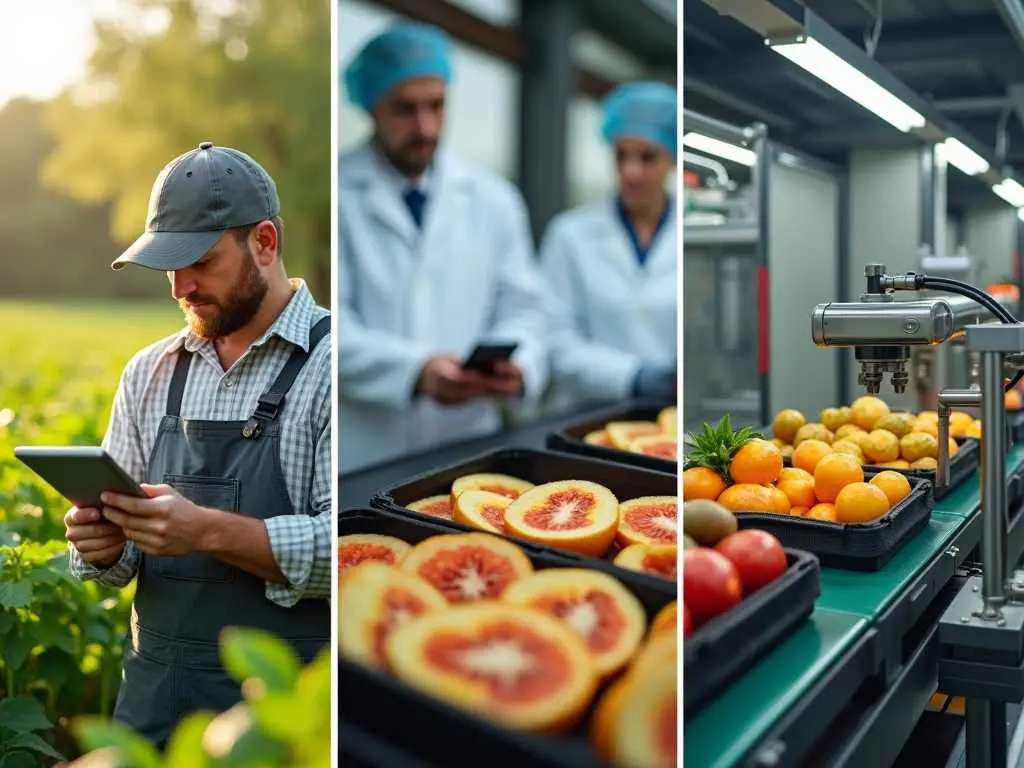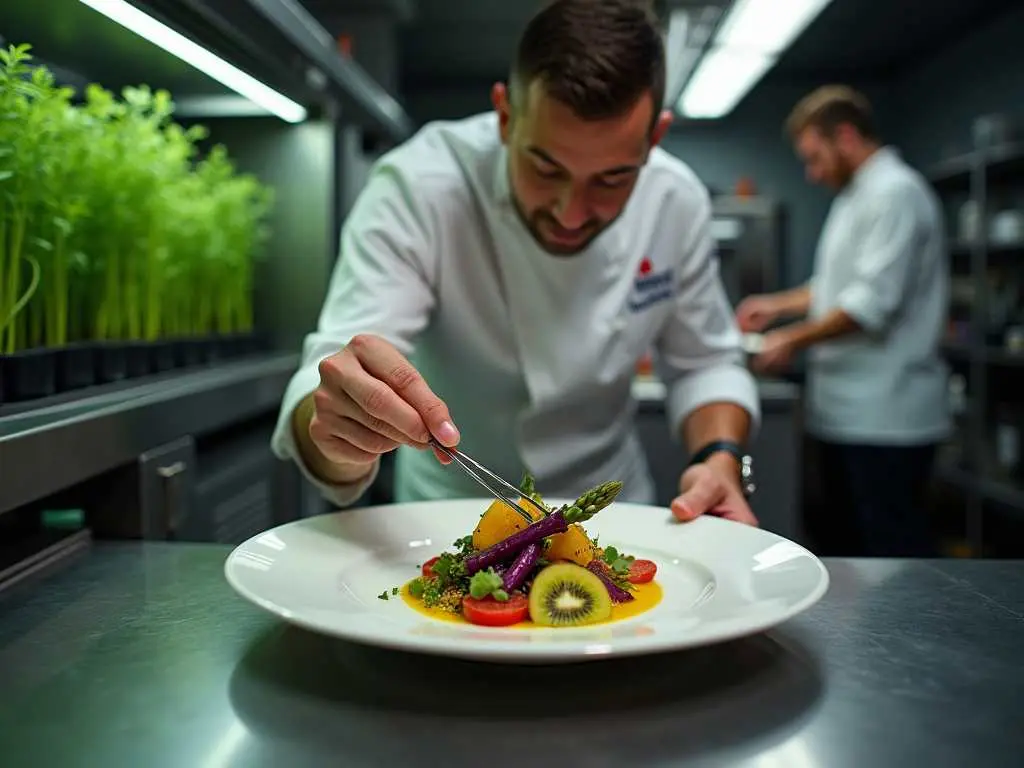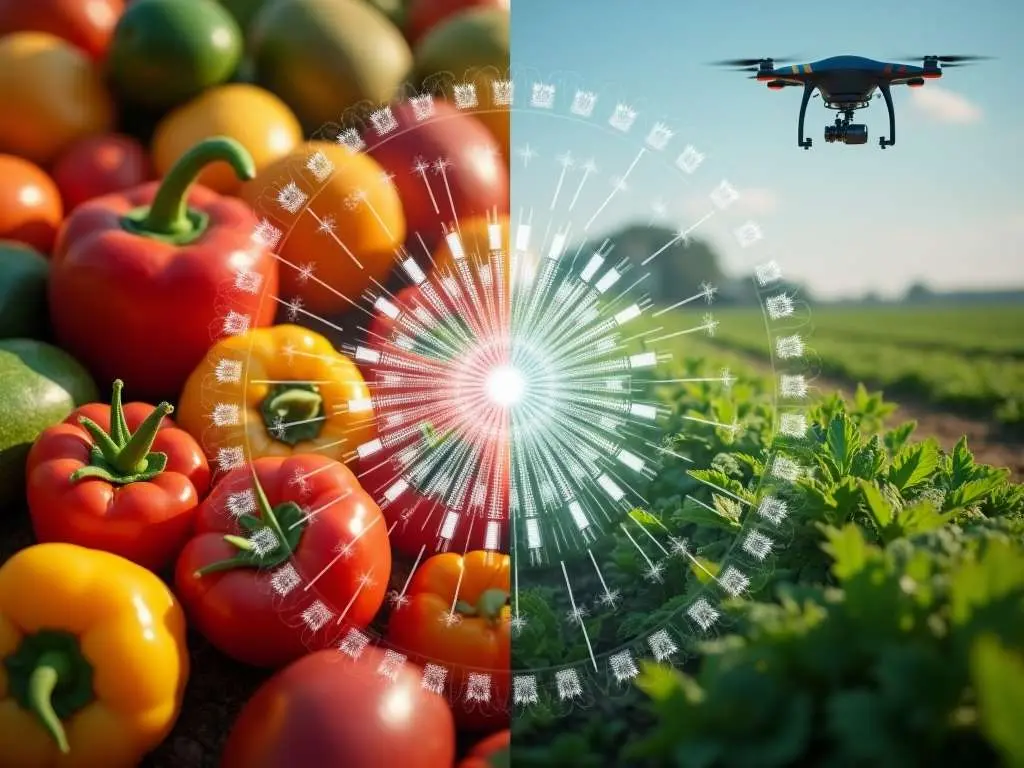As a leading expert in sustainable agriculture and organic product development, I’ve observed the transformative impact of peak ripeness on the organic industry. This article explores how PeakRipe is revolutionizing organic product quality, setting new standards for flavor, nutrition, and sustainability.
The Essence of Peak Ripeness
Peak ripeness represents the optimal moment when a product reaches its full potential in terms of flavor, nutrition, and overall quality. For organic products, this concept is particularly crucial as it aligns with the principles of natural growth and minimal intervention.
Understanding the Science of Ripening
The ripening process involves complex biochemical changes that affect the taste, texture, and nutritional profile of organic produce. As fruits and vegetables mature, they undergo several key transformations:
- Conversion of starches to sugars
- Softening of cell walls
- Production of aromatic compounds
- Changes in pigmentation
These changes are orchestrated by plant hormones, primarily ethylene, which plays a crucial role in initiating and regulating the ripening process.
The PeakRipe Advantage
PeakRipe technology leverages advanced sensors and data analytics to precisely determine the optimal harvest time for each crop. This ensures that organic products are harvested at their peak, maximizing both flavor and nutritional content.
Benefits of PeakRipe Organic Products
- Enhanced Flavor Profile
- Optimized Nutritional Value
- Extended Shelf Life
- Reduced Food Waste
Innovations in Organic Farming
Organic farmers are adopting innovative techniques to achieve peak ripeness consistently:
Precision Agriculture
By utilizing soil sensors, weather data, and satellite imagery, farmers can create optimal growing conditions for each crop, ensuring they reach peak ripeness at the right time.
Controlled Environment Agriculture (CEA)
CEA systems, such as vertical farms and greenhouses, allow for precise control over growing conditions, enabling year-round production of peak-ripe organic produce.
The Impact on Organic Product Development
PeakRipe technology is not limited to fresh produce. It’s revolutionizing various organic product categories:
Organic Beverages
Juices and smoothies made from peak-ripe fruits offer superior taste and higher nutrient content. Some companies are even exploring “living” beverages that continue to ripen and develop flavor complexity over time.
Organic Cosmetics
Skincare products formulated with peak-ripe botanical ingredients boast higher concentrations of active compounds, resulting in more effective and potent formulations.
Organic Textiles
Fibers harvested from peak-ripe organic cotton and other plants exhibit improved strength and durability, leading to higher-quality textiles.
Consumer Trends and Market Growth
The demand for peak-ripe organic products is on the rise, driven by consumers’ increasing focus on quality, flavor, and nutrition. According to recent market research, the global organic food market is projected to grow at a CAGR of 11.5% from 2021 to 2026.
Challenges and Future Directions
While PeakRipe technology offers numerous benefits, there are challenges to overcome:
- Scalability: Implementing PeakRipe systems across diverse farming operations and supply chains.
- Education: Raising consumer awareness about the benefits of peak-ripe organic products.
- Sustainability: Ensuring that the pursuit of peak ripeness aligns with sustainable farming practices.
Future research is focused on developing more sophisticated ripeness detection methods, including non-invasive techniques that can assess internal fruit quality without damaging the produce.
The Role of Artificial Intelligence in PeakRipe Technology

Artificial Intelligence (AI) is playing an increasingly important role in achieving peak ripeness in organic products. Machine learning algorithms can analyze vast amounts of data from various sources to predict optimal harvest times with unprecedented accuracy.
AI-Powered Ripeness Detection
Computer vision systems, coupled with deep learning models, can assess the visual characteristics of fruits and vegetables to determine their ripeness stage. These systems can process thousands of images per minute, allowing for rapid and consistent quality control.
Predictive Analytics for Harvest Planning
By integrating data from weather forecasts, soil sensors, and historical yield information, AI models can predict the ideal harvest window for each crop, ensuring that organic products are harvested at their peak.
Sustainability and PeakRipe
The PeakRipe approach aligns closely with sustainability goals in organic agriculture:
Reduced Food Waste
By harvesting at the optimal time and extending shelf life, PeakRipe technology significantly reduces food waste throughout the supply chain.
Energy Efficiency
Precise ripening control can lead to more efficient use of energy in storage and transportation, as products are less likely to spoil prematurely.
Biodiversity Preservation
The focus on peak ripeness encourages the cultivation of a wider variety of crop species and heirloom varieties, contributing to agricultural biodiversity.
Consumer Education and Engagement
As PeakRipe technology advances, consumer education becomes crucial. Organic producers and retailers are developing innovative ways to communicate the benefits of peak-ripe products:
- Interactive packaging that indicates optimal ripeness
- Mobile apps that provide ripeness information and usage suggestions
- In-store displays showcasing the PeakRipe process
Global Impact of PeakRipe Organic Products
The adoption of PeakRipe technology in organic agriculture has far-reaching implications:
Economic Empowerment
Smallholder farmers in developing countries can benefit from PeakRipe technology, accessing premium markets for their high-quality organic produce.
Health and Nutrition
Peak-ripe organic products offer optimal nutrient profiles, contributing to improved public health outcomes.
Cultural Preservation
By emphasizing the unique qualities of peak-ripe local varieties, PeakRipe technology supports the preservation of traditional agricultural practices and food cultures.
Regulatory Considerations
As PeakRipe technology becomes more prevalent in organic agriculture, regulatory bodies are considering new standards to ensure consistency and transparency:
- Definitions of peak ripeness for different organic products
- Labeling requirements for peak-ripe organic items
- Certification processes for PeakRipe technology implementation
Collaboration and Research
The future of PeakRipe organic products relies on collaboration between various stakeholders:
- Farmers and producers
- Technology developers
- Research institutions
- Regulatory agencies
- Consumers
Ongoing research focuses on:
- Developing non-destructive ripeness assessment methods
- Improving post-harvest handling techniques for peak-ripe products
- Exploring the potential health benefits of consuming peak-ripe organic foods
The Future of Organic Gastronomy

PeakRipe technology is inspiring a new wave of culinary innovation:
- Chefs are creating dishes that showcase the intense flavors of peak-ripe organic ingredients
- Food manufacturers are developing new product lines that capitalize on the superior quality of peak-ripe organic inputs
- Mixologists are experimenting with peak-ripe organic fruits to create complex, nuanced cocktails
People Also Ask
Q: How does PeakRipe technology differ from traditional ripening methods?
A: PeakRipe technology uses advanced sensors and data analytics to precisely determine the optimal harvest time, ensuring products are picked at their peak. Traditional methods often rely on visual cues or fixed schedules, which can be less accurate.
Q: Are peak-ripe organic products more expensive?
A: While peak-ripe organic products may command a premium due to their superior quality and flavor, the reduced waste and extended shelf life can offset costs, making them competitively priced in many cases.
Q: Can PeakRipe technology be applied to all types of organic products?
A: PeakRipe principles can be applied to a wide range of organic products, including fruits, vegetables, grains, and even non-food items like cotton. However, the specific techniques may vary depending on the product type.
Conclusion
PeakRipe technology is ushering in a new era for organic products, where peak ripeness becomes the standard rather than the exception. By harnessing the power of nature’s perfect timing, we can create organic products that are not only more flavorful and nutritious but also more sustainable and economically viable. As consumers increasingly demand quality and transparency, PeakRipe organic products are poised to lead the future of sustainable agriculture and food production.
References
1 Kader, A. A. (1999). Fruit maturity, ripening, and quality relationships. Acta Horticulturae, 485, 203-208.
2 Grand View Research. (2021). Organic Food Market Size, Share & Trends Analysis Report By Product (Fruits & Vegetables, Meat, Fish & Poultry), By Region, And Segment Forecasts, 2021 – 2028.


